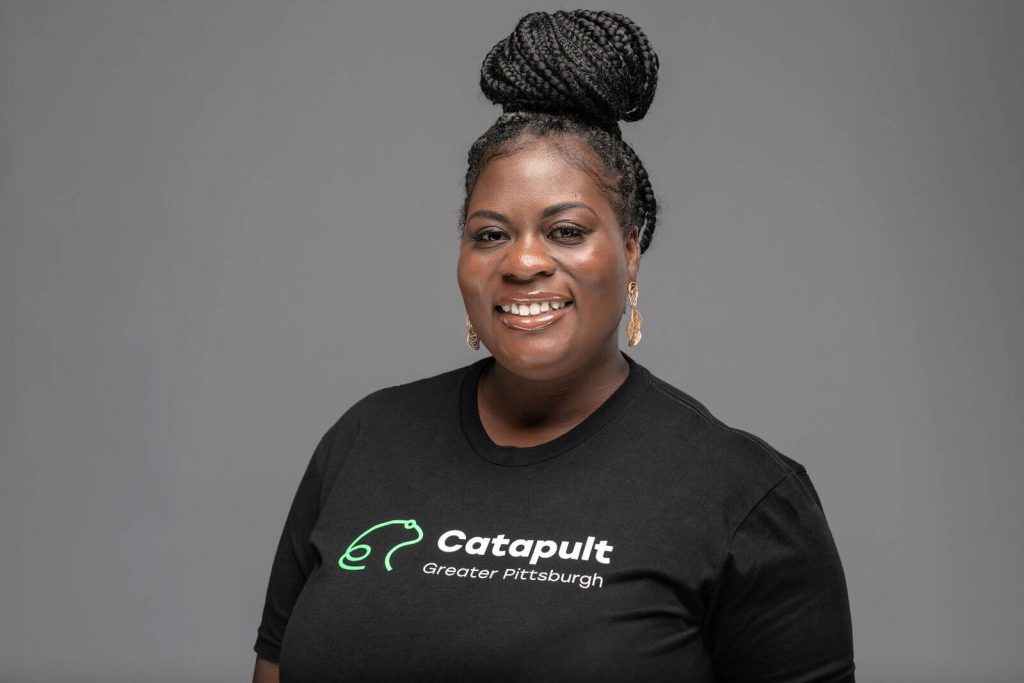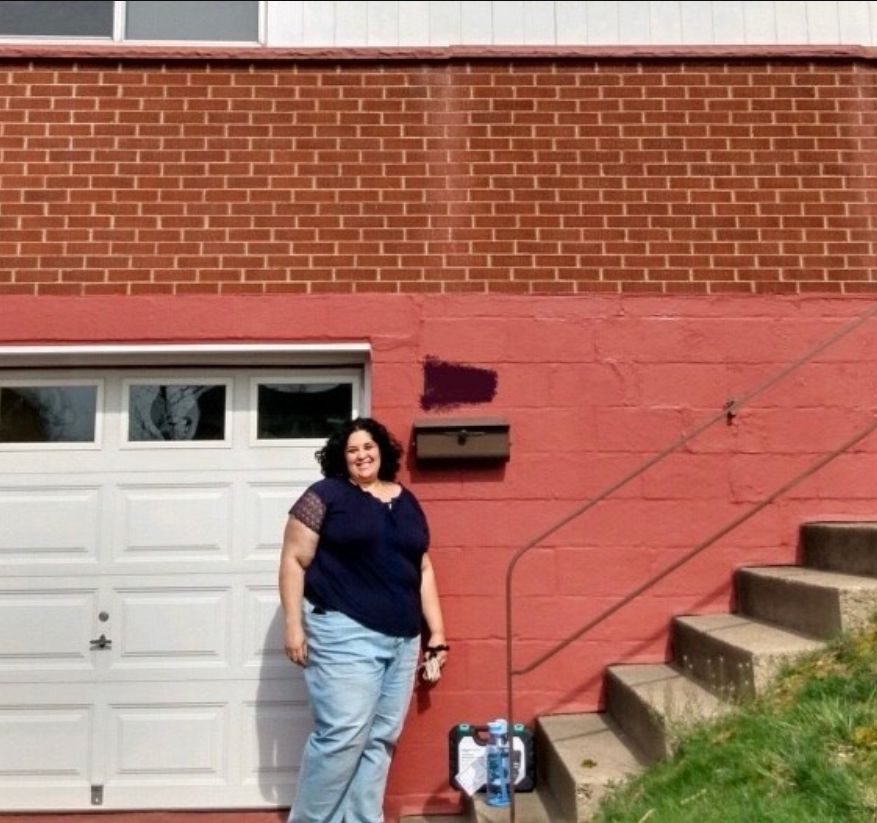The wealth gap between Black and white families has been growing. According to the Brookings Institute, the difference between Black and white family wealth has steadily climbed since 1992, peaking at $214,970 in 2022.
This gap is particularly obvious when looking at homeownership rates, with only 44.1% of Black Americans owning a home, compared to 72.3% of white Americans. If we zero in on Pittsburgh, this disparity gets even worse — here the Black homeownership rate is about 31%, compared to 73% for white Pittsburghers.
Addressing the Wealth Gap
Addressing this wealth gap is central to our mission at Catapult Greater Pittsburgh.
Through homeownership, entrepreneurship, and financial education, we are working to turn these numbers around and ensure systematically disenfranchised communities achieve economic justice.
The Pennsylvania Housing Finance Agency (PHFA) shares our vision and approached us about creating a program to close the racial homeownership gap in the city. Together, we created a pilot program called Revitalizing Neighborhoods & Increasing Homeownership (RNIH) that launched in February of 2023.
The program opens doors to interested homebuyers by:
- reducing purchasing barriers,
- providing financial assistance for home repairs,
- and coaching potential homebuyers.
For homebuyers who qualify, grants of up to $25,000 are available to help lower the loan principal and to apply to closing costs. Excess grant funds can also be used to pay down the borrower’s student loans. As another benefit, additional assistance funds in the form of a 10-year forgiven loan of up to 5% of the sales price are available to eligible borrowers.
“The end goal is to build generational wealth for individuals and their families who live in Allegheny county. The hardest part of buying a house is having the cash to close. A lot of people have worked on their credit, created their budget, but being able to save $15,000 or more for a down payment is not as easy. And a lot of us in the Black and brown community haven't had the opportunity to have parents or grandparents gift us that money because of systemic racism that has impacted our relationship with money and the opportunities that we've had. This program has really been helpful in getting folks to the closing table.”
Brettney Duck, Catapult Director of Homeownership
Making it to the Closing Table
Amber Solomon was one of those individuals who made it to the closing table — though
she never thought she’d get there. While she always dreamt of becoming a homeowner, she didn’t think it was realistic for her.
“I ended up finding Catapult through one of my friends who told me I could buy a house with their help. I told her she was crazy, and there was no way I could afford to buy a house. Even if there was a program, I just didn’t believe it,” Solomon recalled.
Once Solomon got connected with Catapult and the RNIH program, her lofty dream started to seem more grounded in reality.
A Step-by-Step Process
Participants of the RNIH program must complete three steps to receive assistance.
Step 1
First, they meet with a Catapult financial counselor to better understand their relationship with money, including how trauma and their life experiences impact that. Together, they start tracking their spending and analyze their credit and budget to determine what they can afford. Depending on the participant and their situation, they complete either seven or 12 financial education sessions.
Step 2
Next, they do a homebuyer workshop with one of our partner housing counseling agencies — WAVE , NeighborWorks Western Pennsylvania, or Advantage Credit Counseling Service — to learn the ins and outs of homeownership, everything from what to expect during a home inspection to understanding all the expenses involved with owning a home.
Step 3
Once they receive their homebuyer education certificate, they are referred to a housing counseling agency for pre-purchase counseling and can choose from four approved lenders to secure their loan. This level of homeownership education not only ensures these homeowners get into homes, but actually stay in them.
This level of homeownership education not only ensures these homeowners get into
homes, but actually stay in them.
Closing the Racial Homeownership Gap
“I really liked that because it was very much about getting into a house and also learning about the whole process to set us up for success,” explained Solomon.
Solomon ended up getting $10,000 in closing costs covered through the RNIH program that she put toward her four-bedroom dream home in Penn Hills. With the money she saved for a down payment, she was able to get her floors refinished. She later learned that an additional $18,000 went toward paying down her student loans.
“When I got the email from my student loan company, I cried again, because that’s
insane,” she said.
To date, there are more than 300 participants in the RNIH program and 11 families who have gotten into homes. That’s 11 households proving that education and opportunity are key to closing the racial homeownership gap.
The RNIH pilot will continue for three years or until 180 participants have closed on their
homes.






